| Listing 1 - 10 of 14 | << page >> |
Sort by
|
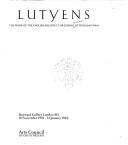
ISBN: 0728703033 0728703041 9780728703032 9780728703049 Year: 1984 Publisher: London Arts council of Great Britain
Abstract | Keywords | Export | Availability | Bookmark
 Loading...
Loading...Choose an application
- Reference Manager
- EndNote
- RefWorks (Direct export to RefWorks)
72 LUTYENS, EDWIN --- 72.071 LUTYENS --- CDL --- 72 LUTYENS, EDWIN Architectuur. Bouwkunst--LUTYENS, EDWIN --- Architectuur. Bouwkunst--LUTYENS, EDWIN --- Lutyens, Edwin Landseer Sir --- -Exhibitions --- Exhibitions --- Lutyens, --- Lutyens, Edwin, Sir, --- Lutyens, Edwin Landseer, --- Lutyens, E. L. --- Lutyens, Edwin, --- Exhibitions. --- Expositions --- 72.07 --- Lutyens, Edwin Landseer 1869-1944 (°Londen, Engeland) --- Engelse landhuizen en tuinen ; E. Lutyens --- Architectuur ; Groot-Brittannië ; 1890-1944 ; E. Lutyens --- Architectuur ; villa's ; cottages --- Arts and Crafts --- Architecten. Stedenbouwkundigen A - Z --- Lutyens, Edwin Landseer, - Sir, - 1869-1944 - Exhibitions --- Lutyens, Edwin Landseer, - Sir, - 1869-1944
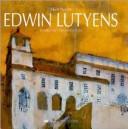
ISBN: 1854903772 Year: 1994 Publisher: London Academy editions
Abstract | Keywords | Export | Availability | Bookmark
 Loading...
Loading...Choose an application
- Reference Manager
- EndNote
- RefWorks (Direct export to RefWorks)
Edwin Landseer Lutyens 1869-1944 (°London). --- Architectuurtekeningen ; Edwin Lutyens --- 72.07 --- 741.07 --- Architecten. Stedenbouwkundigen A - Z --- Tekenkunst ; tekenkunstenaars A - Z --- Lutyens, Edwin Landseer Sir --- -Notebooks, sketches, etc --- Royal Institute of British Architects. Drawings Collection --- -Catalogs --- Edwin Landseer Lutyens 1869-1944 (°London) --- Lutyens, Edwin Landseer, --- Lutyens, E. L. --- Lutyens, Edwin, --- Notebooks, sketchbooks, etc. --- Royal Institute of British Architects. --- Catalogs.
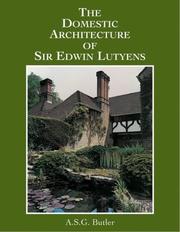
ISBN: 1851491007 Year: 2003 Publisher: Woodbridge Antique collectors' club
Abstract | Keywords | Export | Availability | Bookmark
 Loading...
Loading...Choose an application
- Reference Manager
- EndNote
- RefWorks (Direct export to RefWorks)
Country homes --- Designs and plans --- Lutyens, Edwin Landseer,
Book
ISBN: 0190236884 019061384X 0190236892 0190236876 9780190236878 9780190236892 9780190236861 0190236868 9780190665814 0190665815 Year: 2016 Publisher: New York
Abstract | Keywords | Export | Availability | Bookmark
 Loading...
Loading...Choose an application
- Reference Manager
- EndNote
- RefWorks (Direct export to RefWorks)
This multiauthor collection, the first of an unprecedented four-volume series of analytical essays on music by women composers from Hildegard of Bingen to the twenty-first century, presents detailed studies of compositions written since 1960 by Ursula Mamlok, Norma Beecroft, Joan Tower, Sofia Gubaidulina, Chen Yi, Kaija Saariaho, Libby Larsen, and Elisabeth Lutyens. Each chapter opens with a brief biographical sketch of the composer written by the editors, followed by an in-depth analysis of a single representative composition linking analytical observations with broader considerations of music history, gender, culture, or hermeneutics.
Mamlok, Ursula. --- Beecroft, Norma. --- Tower, Joan, --- Gubaidulina, Sofia, --- Chen, Yi, --- Saariaho, Kaija. --- Larsen, Libby. --- Lutyens, Elisabeth,
Book
ISBN: 1317102991 1280690151 9786613667090 1409444031 9781409444039 9780754650195 0754650197 9781317102991 9781280690150 6613667099 9781315593111 9781317102984 9781138262768 1315593114 Year: 2012 Publisher: Farnham, Surrey, U.K. ; Burlington, VT : Ashgate Pub.,
Abstract | Keywords | Export | Availability | Bookmark
 Loading...
Loading...Choose an application
- Reference Manager
- EndNote
- RefWorks (Direct export to RefWorks)
Contemporaries at the Royal College of Music, Elisabeth Lutyens (1906-1983), Elizabeth Maconchy (1907-1994) and Grace Williams (1906-1977) were important figures in twentieth-century British music. Combining musical analysis with contextual material drawn from documents and interviews, Rhiannon Mathias re-evaluates the composers' positions in British music history.
Music --- History and criticism. --- Luytens, Elisabeth, --- Machonchy, Elizabeth, --- Williams, Grace, --- Criticism and interpretation. --- History and criticism --- Lutyens, Elisabeth, --- Maconchy, Elizabeth, --- Le Fanu, Elizabeth Maconchy, --- Fanu, Elizabeth Maconchy Le, --- LeFanu, Elizabeth Maconchy, --- E. L. --- L., E. --- Lutyens, Agnes Elisabeth, --- Williamson, Malcolm,
Book
ISBN: 9789064507151 9064507155 Year: 2010 Publisher: Rotterdam 010 Publishers
Abstract | Keywords | Export | Availability | Bookmark
 Loading...
Loading...Choose an application
- Reference Manager
- EndNote
- RefWorks (Direct export to RefWorks)
The British architect Sir Edwin Lutyens (1869-1944) designed 140 cemeteries in the countryside of Flanders and northern France for soldiers killed in the First World War. The cemeteries can be regarded as an imprint of the former battlefront on the map of Europe. All were designed according to principles established beforehand, based on the idea of a cathedral, church or chapel in the open air, and include uniform gravestones, a War Stone and a Cross of Sacrifice. Yet the difference in size, alignment and provenance make them all unique variations on the themes in question. The most memorable aspects are their meticulously chosen position in the landscape, the varied selection of trees and other greenery, and the architecture of the entrance and shelter buildings. In an exhaustive landscape-architectural analysis, this opulently illustrated book charts the history of the designs and reveals the underlying principle of order and variation in the architecture. All 140 cemeteries are fully documented with references to the places where they are to be found.
Lutyens, Edwin L. --- graveyards --- churchyards --- Lutyens, Edwin Landseer --- Cimetière --- Cemeteries --- War memorials --- Lutyens, Edwin, --- 726.8 --- 726.82 --- Begraafplaatsen ; Vlaanderen ; Noord-Frankrijk ; rond 1918 ; Sir E. Lutyens --- Militaire kerkhoven ; Tweede Wereldoorlog --- Landschapsarchitectuur ; begraafplaatsen ingebed in het landschap --- Lutyens, Edwin Landseer 1869-1944 (°Londen, Engeland) --- Jekyll, Gertrude --- Oorlogsmonumenten --- 726.82 <493> --- Funeraire architectuur. Gebouwen op begraafplaatsen --- Religieuze architectuur ; grafmonumenten --- Grafmonumenten--België --- Monuments. --- 726.82 <493> Grafmonumenten--België --- 726.8 Funeraire architectuur. Gebouwen op begraafplaatsen --- Lutyens, Edwin Landseer, --- Soldiers' monuments --- World War, 1914-1918 --- Criticism and interpretation. --- 72.07 --- European War, 1914-1918 --- First World War, 1914-1918 --- Great War, 1914-1918 --- World War 1, 1914-1918 --- World War I, 1914-1918 --- World War One, 1914-1918 --- WW I (World War, 1914-1918) --- WWI (World War, 1914-1918) --- History, Modern --- War monuments --- Art and war --- Memorials --- Monuments --- Military parks --- Soldiers --- Sepulchral monuments --- Burial grounds --- Burying-grounds --- Churchyards --- Graves --- Graveyards --- Memorial gardens (Cemeteries) --- Memorial parks (Cemeteries) --- Memory gardens (Cemeteries) --- Necropoleis --- Necropoles --- Necropoli --- Necropolises --- Burial --- Death care industry --- Architecten. Stedenbouwkundigen A - Z --- Great Britain. --- Commonwealth War Graves Commission (Great Britain) --- Imperial War Graves Commission (Great Britain) --- Religious architecture --- anno 1910-1919 --- Private houses --- Sociology --- Architecture --- Public buildings --- Western Europe --- CWGC (Commonwealth War Graves Commission) --- Architecture funéraire --- Great Britain --- Lutyens, Edwin --- 718 --- Vlaanderen --- Noord-Frankrijk --- Architectuurtheorie --- Begraafplaatsen --- Kerkhoven --- World War, 1914-1918 - France - Monuments --- World War, 1914-1918 - Flanders - Monuments --- Cemeteries - France --- Cemeteries - Flanders --- Soldiers' monuments - France --- Soldiers' monuments - Flanders --- War memorials - France --- War memorials - Flanders --- Lutyens, Edwin, 1869-1944 --- military cemeteries [veteran cemeteries]
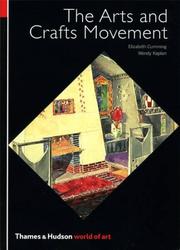
ISBN: 0500202486 Year: 1991 Publisher: London Thames and Hudson
Abstract | Keywords | Export | Availability | Bookmark
 Loading...
Loading...Choose an application
- Reference Manager
- EndNote
- RefWorks (Direct export to RefWorks)
Arts and crafts movement --- 72.037 --- Architectuur ; design ; 19de en 20ste eeuw ; Arts and Crafts --- Ashbee, C.R --- Hoffmann, Jozef --- Lutyens, Edwin --- Morris, William --- Saarinen, Eliel --- Stickley, Gustav --- Wright, Frank Lloyd --- Aesthetic movement (Art) --- History --- Architectuurgeschiedenis , 1900 - 1950 --- Applied arts. Arts and crafts --- decorative arts [discipline] --- Arts and Crafts [movement] --- toegepaste kunsten --- Arts and Crafts --- anno 1800-1899 --- 7.035 --- Kunstgeschiedenis ; Classicisme. Romantiek. Historicisme. Eclectisme
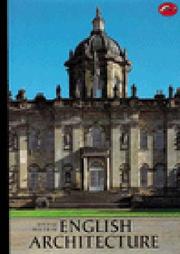
ISBN: 0500201714 0500181721 Year: 1979 Publisher: London Thames & Hudson
Abstract | Keywords | Export | Availability | Bookmark
 Loading...
Loading...Choose an application
- Reference Manager
- EndNote
- RefWorks (Direct export to RefWorks)
Every generation needs its own history of English architecture: new facts are discovered, old assumptions may turn out to be wrong, time's perspective brings different facets into prominence. David Watkin, one of the most brilliant of our younger architectural historians, here provides a brief but highly readable outline of the whole story, from Saxon times to the present, centred on buildings that people can actually see today. His European perspective illuminates England's surprisingly close stylistic links with France, from the impact of Jumièges Abbey in the eleventh century to that of Le Corbusier in the twentieth. The great flowering of Romanesque under the Normans, the development of the Gothic style through its various phases - Early English, Decorated and Perpendicular - are clearly described, taking account of the latest research (for instance, the French origins of Perpendicular). After sections on the Tudor and Jacobean periods, the Renaissance, Baroque, Palladianism and Neo-Classicism, come the two chapters that will no doubt arouse the most controversy: those on Victorian and modern architecture. Unlike previous historians, Dr Watkin sees no falling off in quality in the nineteenth century, nor does he regard the Modern Movement as the logical consummation of all architectural progress, but simply as a style like any other, destined to be eventually superseded.
architecture [discipline] --- Architecture --- England --- History --- 72.03 --- Groot-Brittannië --- Engeland --- architectuur --- architectuurgeschiedenis --- Groot-Brittannie --- Angelsaksische architectuur --- normandische architectuur --- gotiek --- Tudor --- Jacobean --- Jones Inigo --- Wren Christopher --- barok --- Hawksmoor Nicholas --- Vanbrugh John --- Talman William --- Archer Thomas --- Thornhill James --- Gibbs James --- neoclassicisme --- Greek Revival --- Nash John --- Soane John --- Chambers William --- Adam Robert --- Victorian --- Pugin Augustus Welby Northmore --- Ruskin John --- neogotiek --- Gothic Revival --- Shaw Richard Norman --- Arts and crafts --- twintigste eeuw --- Lutyens Edwin --- Edwardian --- 72.03 Bouwstijlen. Architectuurscholen. Architectuurstromingen. Bouwkunst: periodenen invloeden --- Bouwstijlen. Architectuurscholen. Architectuurstromingen. Bouwkunst: periodenen invloeden --- Architectuur (geschiedenis) --- Architectuurgeschiedenis
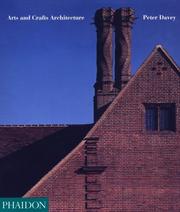
ISBN: 0714828742 Year: 1995 Publisher: London Phaidon
Abstract | Keywords | Export | Availability | Bookmark
 Loading...
Loading...Choose an application
- Reference Manager
- EndNote
- RefWorks (Direct export to RefWorks)
Architecture, Modern --- Arts and crafts movement. --- Architecture --- Arts and crafts movement --- Architectuur ; Arts and Crafts --- 72.037 --- 72.03 --- 72.035 --- 72.036 --- Arts and crafts --- architectuur --- architectuurgeschiedenis --- Morris William --- negentiende eeuw --- twintigste eeuw --- Lethaby William Richard --- Prior Edward --- Voysey C.F.A. --- Ashbee C.R. --- Baillie Scott H.M. --- Lutyens Edwin --- Stickley Gustav --- Greene & Greene --- Wright Frank Lloyd --- Art nouveau --- Arts and Crafts --- Architectuurgeschiedenis , 1900 - 1950 --- Architectuur (geschiedenis) --- Architectuurgeschiedenis --- 19de eeuw (architectuur) --- Negentiende eeuw (architectuur) --- 20ste eeuw (architectuur) --- Twintigste eeuw (architectuur) --- Ashbee C.R --- Baillie Scott H.M --- Voysey C.F.A --- Aesthetic movement (Art) --- Architecture, American --- Architecture, British --- Architectuurgeschiedenis ; 19e eeuw
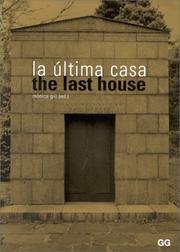
ISBN: 8425217342 9788425217340 Year: 1999 Publisher: Barcelona Gili
Abstract | Keywords | Export | Availability | Bookmark
 Loading...
Loading...Choose an application
- Reference Manager
- EndNote
- RefWorks (Direct export to RefWorks)
726.8 --- Architecture, Modern --- -Sepulchral monuments --- Graftombes, ontworpen door o.a. A. Aalto, G. Asplund, M. Botta, W. Cuyvers, W. Gropius, H. Guimard, J. Hoffmann, V. Horta, A. Isozaki, R. Lalique, Le Corbusier, S. Lewerentz, A. Loos, Sir E. Lutyens, J. Llinàs, Ch. R. Mackintosh, J. Plecnik, A. Rossi, E. Saarinen, A. Sant'Elia, C. Scarpa, L. Sulli --- Grafmonumenten ; graftombes ; 20ste eeuw --- 726.82 --- Funeral monuments --- Funerary monuments --- Graves --- Gravestones --- Memorial tablets --- Tablets, Memorial --- Tombstones --- Monuments --- Modern architecture --- Funeraire architectuur. Gebouwen op begraafplaatsen --- Religieuze architectuur ; grafmonumenten --- Sepulchral monuments. --- Tombs. --- 726.8 Funeraire architectuur. Gebouwen op begraafplaatsen --- Sepulchral monuments --- Tombs --- Architecture --- History --- Art funéraire --- Cimetière --- Histoire de l'architecture --- Histoire de la sculpture
| Listing 1 - 10 of 14 | << page >> |
Sort by
|

 Search
Search Feedback
Feedback About UniCat
About UniCat  Help
Help News
News